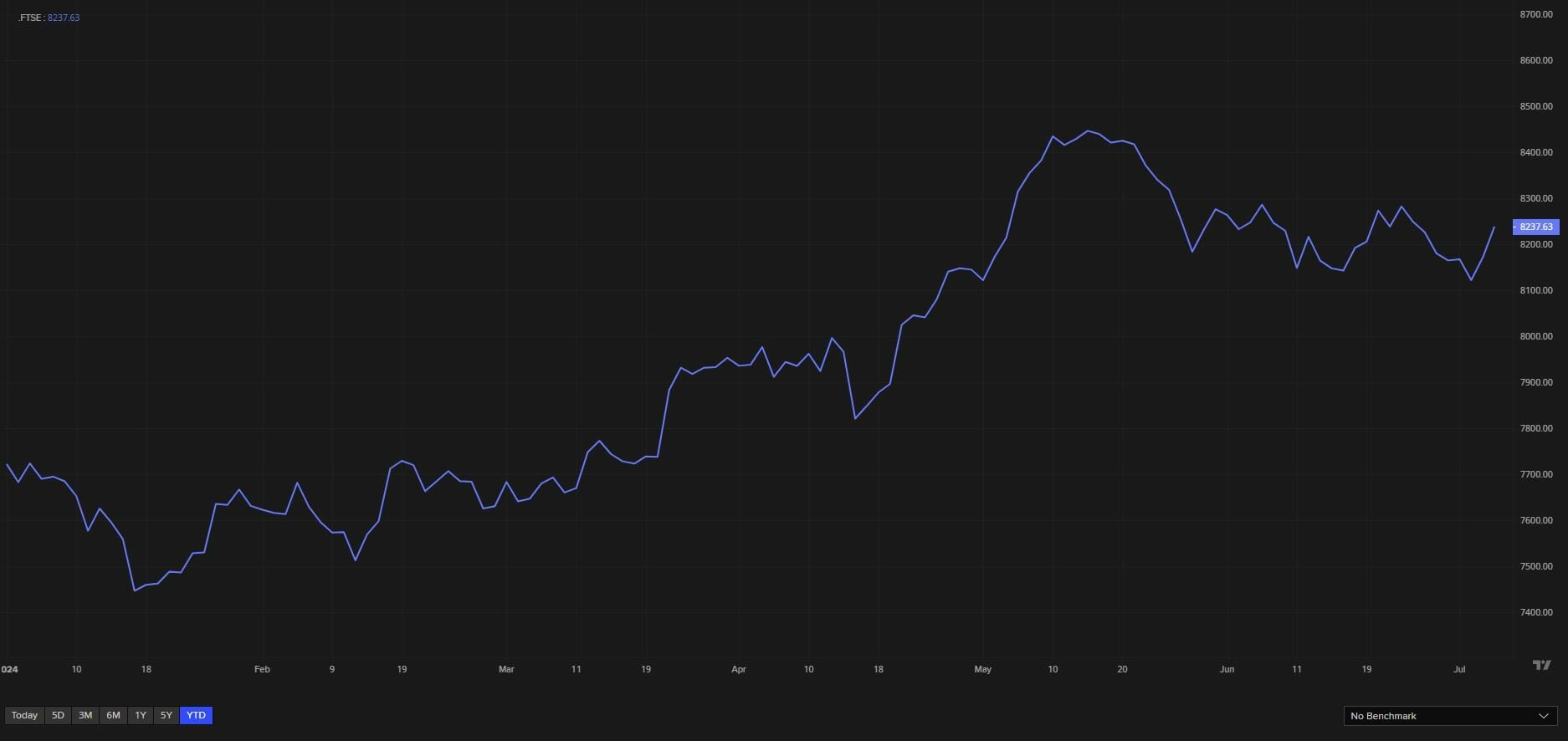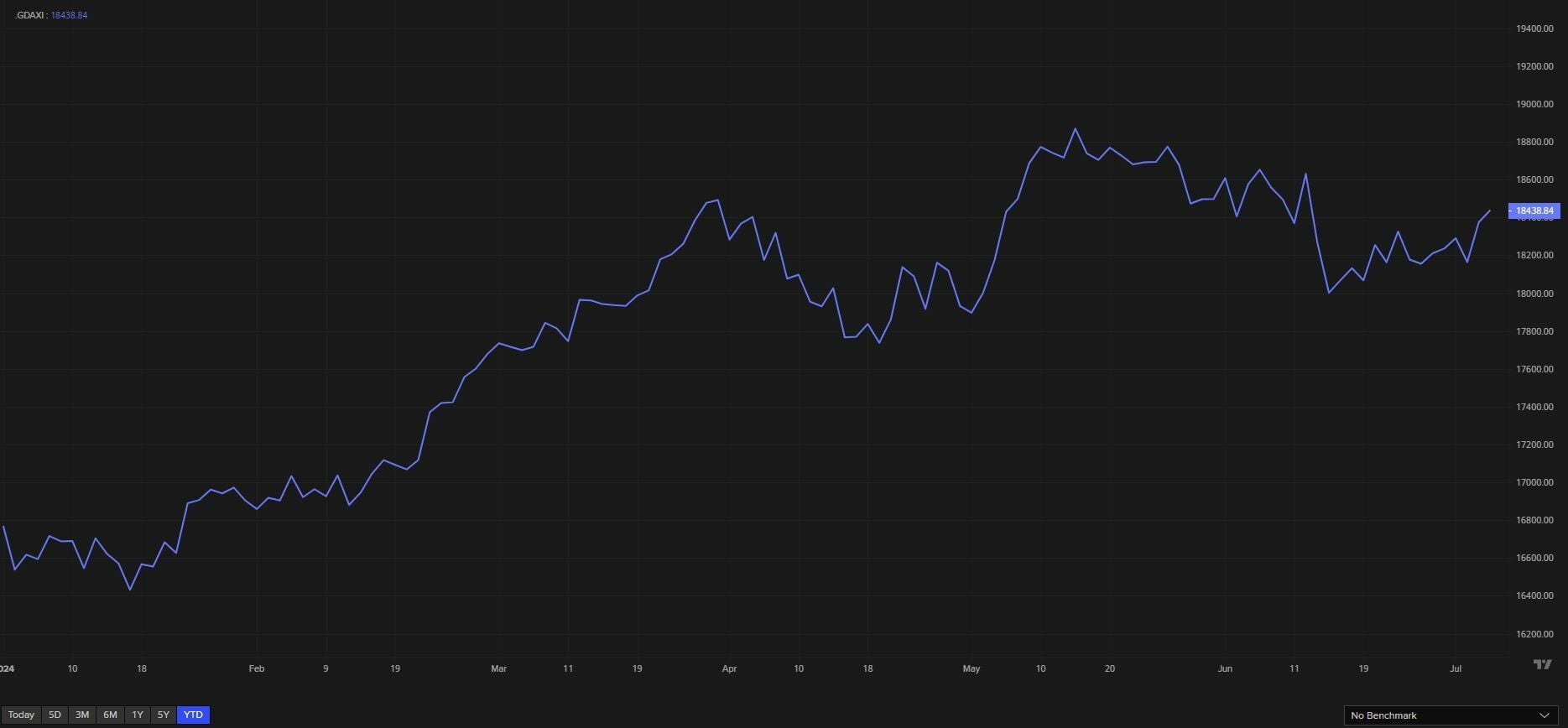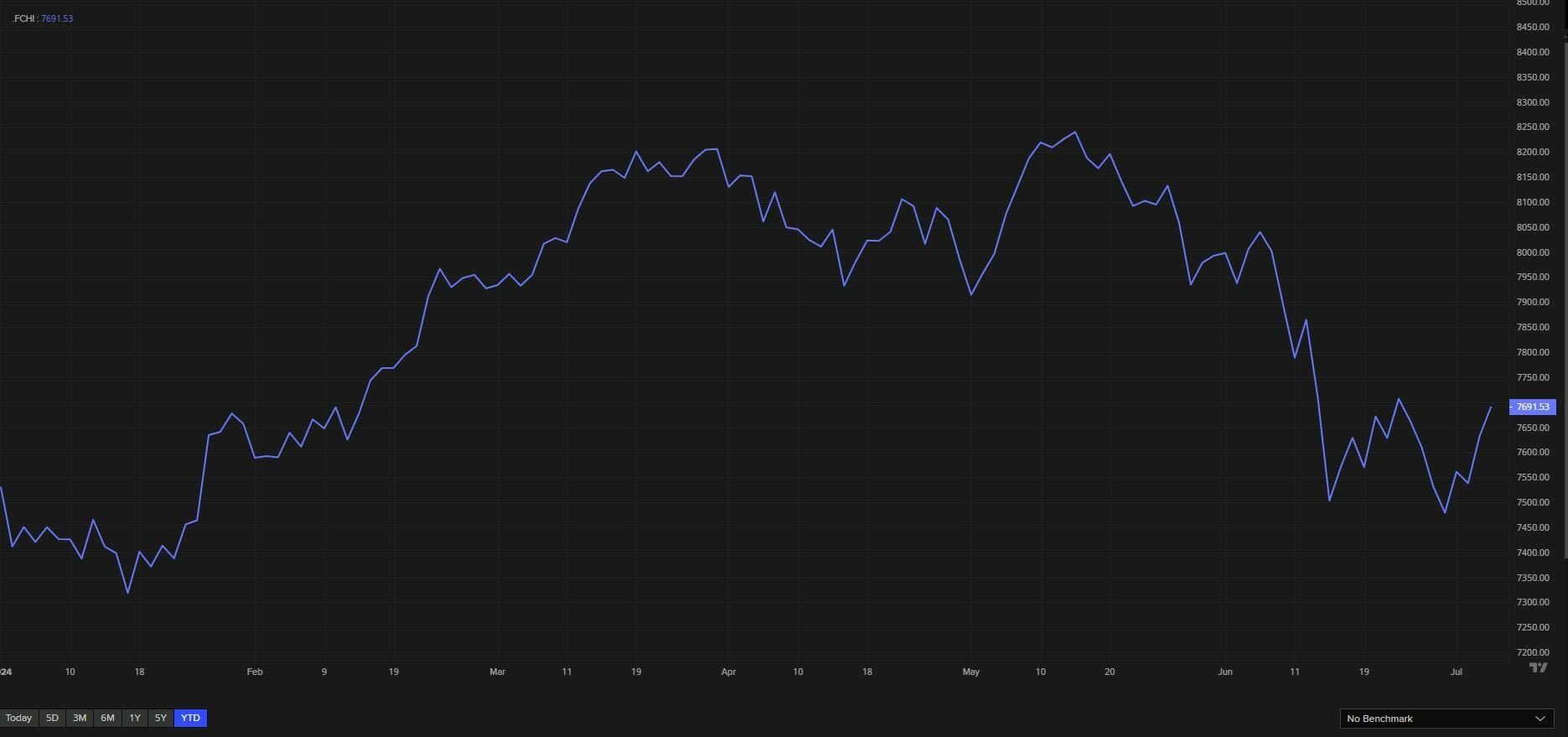The European stock market has clearly lagged behind due to the problems that have come with the strain on French debt, the possible arrival of the far right in the legislative power in the country and the alleged increase in public spending and fiscal deficit that have been interpreted negatively by the financial markets.
And it has occurred at a time when where inflation was seen to be minimized and in the face of upward revisions to growth which was expected to be modest for the various countries of the Old Continent after a dismal start to the year in this regard.
On account of the British elections that were held yesterday, Carlos Gil, trading analyst at Investment Strategies He stresses that “I don’t think they will have much of an effect. If we look at the European indices, DAX, EURO STOXX 50 and banking sectors are in the maximum zone. The important thing is that the Euro Stoxx 50 does not lose the 4,800 pointssince “DAX does not lose 17,600 points”
He also believes that “in the meantime, this lateral movement that is taking place can be interpreted as a consolidation of the upward movement. If the DAX breaks above 18,800 and the Euro Stoxx 50 breaks above 5,125 points, we could see continued bullish momentum. As long as they support the banking sectors.”
Banks that have so far been punished by French debt, especially entities on the Paris Stock Exchange, but they are regaining levels and recovering positions so far this week, and they continue to be the true drivers of all markets.
For Gerardo Ortega, independent analyst and contributor to CMC Markets, “The important thing in the European markets is that we are at the top. At the moment, we are lateralizing and consolidating levels, there is not much more. A relevant question regarding the London’s FTSE 100 is at an all-time high, something similar to what is happening in the United States, where we are at all-time highs, and in Europe, with the total return versions of all the indices. The May candle is the one that rules the market at the moment and the prices have been respecting those levels for two months; In the case of the FTSE 100 the area of 8,100 or so. Falling below that area, consolidating and breaking it would cause some correction.”

And he adds that “there is, I repeat, absolutely nothing at the moment, in the United Kingdom or in Europe, although in the latter case it has minor characteristics. It is true that there has been a break of levels by the Euro Stoxx 50the CAC 40 in Paris has also fallen sharply as a result of the European elections and Macron’s legislative elections. Breaking of supports within a bullish scenario. The point is that the Euro Stoxx is breaking support and the DAX has not done the same, it is a divergent situation. This is potentially bullish because if the supports as a whole have not been broken, it means that the market is still supported. It is not a question of the CAC 40 breaking supports or the Ibex 35 doing so, the market moves in an orderly manner in one direction or another, and when it becomes disordered there may be certain controversies and even a movement, for example, If the DAX breaks the 17,600 zone, there will be nothing until then.”
Gerardo Ortega also reminds us that “in May, the DAX marked new highs of the movement and it was irrelevant from a technical point of view, because we already knew it was bullish, but the Euro Stoxx and the CAC40 did not do so, that is, it was divergent. In the end, everything translates into a sideways movement. As long as the DAX breaks the 17,600 zone, structurally there is no change, I cannot see it under any circumstances. If the DAX consolidates the 18,450 and the Euro Stoxx the 4,990 point zone at the daily close, my feeling is that from This bullish divergent situation would technically confirm the return to the maximums of the movement.”

Let us remember that in the case of EURO STOXX 50its historical maximum levels are still far from the 5,219.96 points recorded on March 28, 2000, although the truth is that, so far this year, marked its best levels on June 7 at 4,584 points, which it is approaching at current levels. The pan-European indicator has appreciated by 10% so far this year.
Yes it is true that, both the CAC 40 at 8,259 points and the Dax at 18,892 points have marked historical highs so far this year, although the Parisian indicator has minimized its current gains to 1.91% and The Dax maintains a double-digit revaluation of 10%.

For the FT 100, the maximum is 8,474 points. They have also occurred this year, with a cumulative rise since January of 6.4% without disturbances due to the legislative elections held yesterday.









![[Img #74756]](https://thelatestnews.world/wp-content/uploads/2025/01/New-concept-of-propulsion-for-airplanes-150x150.jpg)




Add Comment